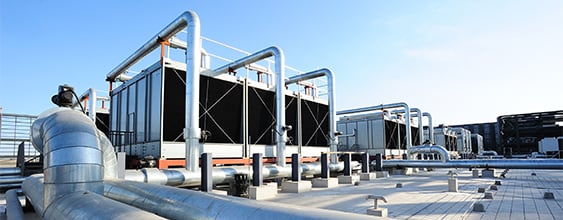Electrification: the future of light vehicles
Andrew Ah Toy, Senior Principal – Infrastructure Investment Decisions for WSP says while hydrogen has a role in our transport future, it does have a technological disadvantage when compared to electricity.
He explains, “For light vehicles, electrification is highly likely to dominate due to the rapid transition to battery electric vehicles that is already occurring. From a consumer perspective, many vehicle owners can charge their cars at home which is a major advantage. The infrastructure requirement to create a hydrogen refuelling network, and the associated supply chain is an inherent challenge for the hydrogen vehicle industry.
“We are already seeing states and councils replacing their light vehicle and bus fleets with electric vehicles, for example, Transport for NSW has started the transition of their entire 8,000 vehicle bus fleet using Battery Electric Buses and this will significantly accelerate over the next 5 years.
“Additionally, almost all major manufacturers of light vehicles are investing in battery electric vehicles. While some are still investing in hydrogen research, it is likely hydrogen in transport will manifest in specific transport applications such as heavy long-haul road and rail freight.
“Long distance heavy freight is more uncertain in terms of the electrification versus hydrogen discussion, given the need to transport heavy loads across longer distances. Considering the higher energy density and quick refuelling ability of hydrogen, it is less clear which technology is better suited for these freight applications.
“Presently in Australia there is no substantial commercial deployment of battery electric or hydrogen fuel cell electric semi-trailers, rail locomotives, heavy haul mining equipment, heavy marine vessels or aircraft. Hydrogen or its derivatives such as ammonia and synthetic methanol may play a more significant role in such applications.
“Our position at WSP is to help our clients in the energy transition. For that reason, we are technology neutral – however we are certainly Future Ready and understand the role that each alternative can bring to the transition. At the end of the day, it all comes down to the balance of cost, including supporting infrastructure, and how much adopting the technology will reduce emissions.”
Hydrogen: For when we can’t electrify
Using green hydrogen as either a feedstock or energy source is expensive given the current price of renewable energy and the unavoidable energy losses in production. However, hydrogen remains a valuable tool in the decarbonisation toolkit particularly for applications which are hard to electrify, as a seaborne export commodity and in chemical feedstock applications such as ammonia/fertiliser production.
Andrew Ward, Principal Engineer – New Energy for WSP says, “Green hydrogen can’t be cheaper than electricity because we need electricity to make it. Therefore, straight electrification is more efficient and cheaper than producing green hydrogen for use as an energy source, but we can’t electrify everything, and hydrogen can fill that gap in applications such as heavy transport. Apart from exporting to our nearby neighbours, it is also difficult to export green electricity, whereas hydrogen can readily be shipped in the form of ammonia anywhere in the world. It is therefore very likely that a seaborne green hydrogen export market will evolve, created by countries with poor renewable energy resources wishing to decarbonise their economies.
“Where hydrogen proves indispensable is in chemical feedstock applications where the actual hydrogen molecules are required. The brown and grey hydrogen currently used today carries a significant carbon footprint and could be displaced by green hydrogen in ammonia/fertiliser production and in any other application where industry currently uses hydrogen derived from fossil fuels. Hydrogen is also showing great promise to displace coking coal in the blast furnaces of the steel sector.
“Green hydrogen could possibly provide a pathway to storing excess or cheaper renewable energy generated during the day for use overnight or during peak demand periods. We would however first need to find a cheaper means to store and move bulk quantities of hydrogen and overcome the fact that expensive electrolysers would be underutilised and running only when cheap or surplus renewable energy is available. This is a very difficult problem to solve and will require whole of system thinking to get it right.
“Green hydrogen production remains expensive. It is currently twice as expensive as natural gas with a current best case of AUD4 per kilogram and it will need to get down to at least AUD2 per kilogram by 2030 to be competitive with other types of energy production. This can be achieved through incentivised economies of production as has been seen in the solar sector but in the short term will also require users to pay a premium for green hydrogen products.”
Big investment in infrastructure is needed
Dan Manderson, Engineering Manager – New Energy for WSP notes the challenges in deploying the transformative scale of renewable energy and other energy infrastructure needed to achieve the world’s decarbonisation objectives.
He says, “We need major infrastructure investments in renewable energy generation, transmission and storage, hydrogen electrolysis, storage, downstream process and transport infrastructure.”
“There is a misconception that renewable energy is limitless. There is certainly a huge amount of potential in Australia to increase the amount of renewable energy we generate, but there are other considerations which will ultimately limit development, including for example the cost of connecting remote high wind speed zones, ecological impacts of large-scale wind and solar development, freshwater scarcity for pumped hydropower developments, and desalination plant locational limitations based on managing marine salinity.
“As governments legislate net zero targets, including in the materials used, there is an opportunity for Australia to produce net zero enabling precursors like lithium and hydrogen but also value-added materials like net zero steel, aluminium and silicon. This broader green industrial potential presents a great opportunity for our nation whatever blend of green electricity and green hydrogen is used to facilitate it.”
For more information contact Nick Gallaugher.
To stay abreast of our latest news, publications, videos and posts, please follow us on LinkedIn.

















